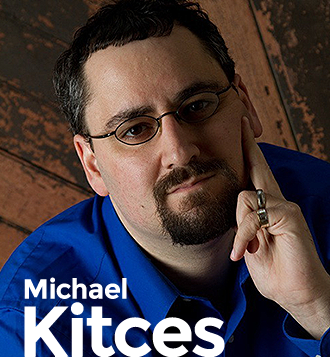
Have or implementing a maintenance program? Here are some things to consider
Yourefolio Staff
Often, we hear that attorneys have, or are developing a client maintenance program. This concept is derived from the “eat what you kill” theory of business. When you are engaged in a transactional business, which is typically consistent with estate planning, there is a constant challenge to drive new revenue. Many factors can challenge this including, the ability to provide the service while operating the business, landscape changes and competition. A recurring revenue stream is a great way to monetize business. This concept is extenuated by financial advisors with the billing of assets under management model. The reason this is such a great concept is that clients don’t have to write a check or pay a bill. Most of the time they don’t even realize the money is gone. So long as their account values increase, there are no complaints. While you can debate if this is right or wrong, advisors have been operating under this structure for years. When they wake up in the morning they are getting paid, if an attorney doesn’t have something to bill for, they don’t.
The concept of subscription based business is the foundation of some of the most successful companies. The world’s largest retailer has a recurring model (Amazon), the largest technology company has a recurring model (Microsoft), telecom and mobile companies have them too. The problem with companies that don’t have it, when their service becomes saturated or no longer relevant, commoditized or someone does it better, business suffers and puts a strain on growth and business. While many businesses are successful without recurring revenue models such as Walmart and Exxon Mobile, they are either necessities or face the same challenges that all transactional businesses have, the next sale.
How do attorneys develop a stream of recurring revenue? Many attorneys implement a “maintenance program” to follow this line of thinking. While we don’t know if this method has proven to be successful, it is certainly the starting point to building a recurring revenue stream. Since we are well connected to financial advisors (owners are also financial advisors), we have done a little homework, performed a few interviews and received some valuable feedback, which we decided to share with you. We hope this helps with establishing or solidifying a recurring revenue model in your business.
Understanding client demographics
First, think about your clients. Are they professionals, are they involved with their family, are they active or older? When you can understand the demographics of your client base and the type of clients you work with you can then begin to develop or enhance a maintenance program. For maintenance programs or recurring revenue models to be successful, they must be adapted to the type of clients you work with. Business owners need one type of program, while retired clients need another. Start by analyzing your business structure and then work from this point to build out the items of the maintenance program. If you have a variety of clients and cannot easily aggregate them in one primary category, then consider tiers of the program.
Clients want to perceive value
When clients are paying for something out of pocket they want to perceive the value of their investment. They need to believe it is something they need and will use. By engaging clients in the program, they will get a benefit out of it. Analyze in their minds what they believe will fulfill these minimum requirements. Consider yourself the client. It is not a matter of convincing them to participate, it is a matter of them being excited to participate. When they are excited or engaged, the program will not only be successful, it will grow and become a primary source of revenue.
Don’t assume that because you find the program to be valuable that your clients will too. While seminars or education, may be important, it may not get clients to say “Wow, $395 a year to be able to attend estate planning seminars and receive newsletters, I am totally in.” Estate Planning isn’t sexy, but it does have engaging aspects. Always consider what clients find exciting, now what you find exciting and valuable when developing a maintenance program.
Take inventory. Find out what clients may be interested in and consider engaging in before implementation. Find out what they expect from your relationship or what they may need moving forward. This will help with implementation and you will have an idea of how to price it.
It started with commissions and 12b-1 fees
Financial advisors and money managers were not always getting paid from assets under management. That concept wasn’t really popular until recently. It has adapted even more due to regulatory constraints but financial advisors realize this is the best way to manage their clients and get paid.
What is lost in all this is insurance. It never went away and does provide a recurring revenue source that everyone can share. What many estate planners fail to realize is that since life insurance is not mandatory (like car and home insurance) more people have property and casualty insurance and not life insurance. Life insurance is inexpensive, but provides a valuable fall back for families and business owners. Financial advisors know this, and many have licenses to sell life and health insurance. The problem is that they refer the estate planning to an attorney who does the heavy lifting. The attorney makes a few thousand on the estate plan transactions, while the financial advisor sells a life insurance policy, receives an initial payment and then a yearly recurring revenue stream on the policy. Why don’t more attorneys get life and health licenses? It is a very simple test in most states. It is legal to share life insurance commissions (as long as both are properly licensed). Some policies pay 110% of the face value in the first year, how much would that help the estate planners bottom line? If the advisor receives some compensation, everyone will be happy.
Women love to build stories
Legacy box, Shutterstock, Ancestry.com and other types of family stories or genealogy are very popular amongst women (and some men) today. You would be surprised how many people subscribe and use these services. Ironically this also falls within the scope of legacy planning. If you’re not already, how effective would it be to offer a legacy planning service to your clients? It certainly provides a different touch point to the client and creates a potential for “stickiness.” If they use this as part of your service do you think they would leave this stuff behind? Would they pay a fee to be able to access these items on a periodic basis? Consider implanting this system into a maintenance program and you may have secured a reason for them to come back year after year.
Life organized
Many attorneys offer document access on their sites, but they have very limited capabilities. Some offer Docubank, which is an excellent and inexpensive service, but your clients can purchase it direct. Is it a benefit if they can get it on their own? Do they need the relationship with you just to have it? There really isn’t a benefit just to have access to legal documents.
How valuable would it be to help them organize their entire estate electronically? It is very simple to update because most people don’t change a lot of things year to year. Even when it does need updating, they can participate on their own. Imagine being able to log in to one spot and get the necessary information. From home/auto insurance to living wills and HIPAA authorizations, access to that information 24 hours a day, 7 days a week is a growing need. Think about how valuable you would be to the entire family should something happen?
Implementing something like this could also improve your business practices. Imagine administering and settling an estate if you have access to all the information in one place. Having easy access makes maintenance more likely. The benefits are much greater than just a simple document vault. The best part is there are free and paid services. Free services cannot be branded and must be used as is. The paid services offer more along with branding. This would be a great service for many financial advisors to offer to keep the clients engaged.
A guaranteed new client every year (from your clients)
Disclaimer: Nothing in life is guaranteed except, ironically, death. However, how nice would it be to get one new client from your existing clients each year? Wouldn’t that be a nice stream of recurring revenue? This method is implemented by many financial advisors and can be easily duplicated by estate planning attorneys alike.
As part of your maintenance plan, try allowing clients to ‘give out’ one new estate plan. This would ensure that you are connected to a potential new client. While we know this may not generate new revenue for an estate plan; they can become a maintenance, insurance or other type of client. The key is the touch and introduction. If you have an automated process, the trade-off could be a few hours for additional opportunities to generate revenue from consistent new sources. Keep this practice going and you could have clients flowing consistently and a great opportunity for recurring revenue.
While many of these suggestions may be simple, implementing them could be the difference between a continued transactional business vs. a recurring revenue model. While we make no guarantees that any of these work, we are pretty sure they can be effective if done the right way. Whatever you choose, developing some type of recurring revenue stream is going to be one of the best ways to keep sales going, sustain business growth and make your practice valuable to someone else when it is your time to move on.


